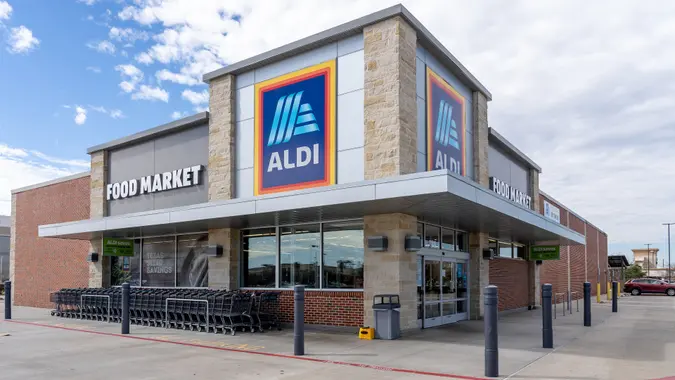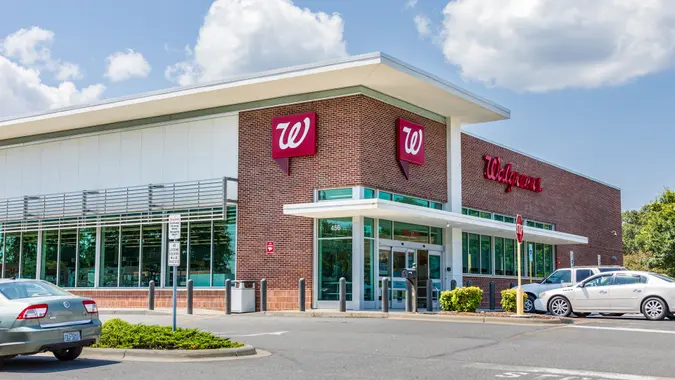The Most Expensive Home Repairs in 2025 — and How To Avoid Them

Commitment to Our Readers
GOBankingRates' editorial team is committed to bringing you unbiased reviews and information. We use data-driven methodologies to evaluate financial products and services - our reviews and ratings are not influenced by advertisers. You can read more about our editorial guidelines and our products and services review methodology.

20 Years
Helping You Live Richer

Reviewed
by Experts

Trusted by
Millions of Readers
Homeowners across the country are paying more to keep their properties in good shape.
From foundation problems to failing HVAC systems, a single major repair can derail even the most carefully planned budget. According to Hippo Insurance, 46% of homeowners spent more than $5,000 out of pocket on home repairs in 2024, a 28% increase in households doing so over the previous year’s 36%. Experts say regular inspections, early detection and smart budgeting can help homeowners stay ahead of these costs.
Here are the most expensive home repairs to watch out for in 2025, and practical steps to avoid them.
Roof Replacements
The national average to replace a 1,200-square-foot roof is $5,700 to $12,000, with most homeowners spending around $8,400. In 2025, higher material costs and labor shortages could drive up costs.
“Missing, cracked or curling shingles that show wear, tear or damage to your roof’s protective layer,” Klosterman said. “Granules from shingles that collect in gutters can indicate aging or damage.”
Annual inspections and quick attention to damaged shingles or leaks can extend a roof’s life and reduce unexpected costs.
Foundation Repairs
Foundation fixes can range from $2,200 to $8,100 according to This Old House, with an average of $5,100, but costs for foundation repairs jump to $20,000 to $23,000 when structural lifting or leveling is required. Inflation and increased labor costs in 2025 mean prices are rising and repairs can add up fast.
“A few cracks in the walls could seem small, but they may be a sign that your home’s structure is damaged,” said Courtney Klosterman, home insights expert at Hippo Home Insurance. “While homeowner’s insurance may cover some foundation damage, it could exclude issues from poor maintenance, making prevention even more crucial.”
Homeowners should keep gutters clear, extend downspouts at least 10 feet from the foundation and address even small leaks immediately. Regular inspections inside and outside the home can help catch warning signs before they turn into costly problems.
HVAC Systems
Rising tariffs and supply chain issues in 2025 are pushing HVAC repairs and replacements higher.
On average, according to Home Guide, homeowners can expect to pay between $5,000 and $8,300 for a full replacement, depending on the homeowner’s location, system size and type. However, smaller fixes like air conditioning and furnace repairs can run $100 to $450.
“HVAC systems rely on multiple components working in harmony, and any failure can affect your comfort and electric bills,” Klosterman said. “Staying on top of maintenance and noticing early warning signs can help avoid these issues.”
Mold Removal
Removing toxic mold in 2025 can cost anywhere between $800 to $4,500, as per Cutting Edge Window Cleaning, depending on geographic location. Southern homeowners pay the least, while West Coast homeowners pay higher costs that reflect the local economy and real estate values.
Klosterman said homeowners should fix even small leaks right away and use exhaust fans in bathrooms and kitchens to vent humid air outside.
Plumbing Problems
Ignoring plumbing issues can cause widespread water damage and 2025 price increases mean undetected leaks can become even more expensive.
“On average, homeowners can expect to pay $125 to $5,000 on plumbing repairs, depending on the severity of the issue,” Klosterman said. “For example, things like basic toilet repairs could cost less, while major pipe leak repairs can cost $5,000 or more.”
She said that homeowners should regularly check exposed pipes for signs of corrosion or leaks and know how to use the main water shut-off valve in case of an emergency.
Budgeting for Repairs
While repairs are often unavoidable, financial planning can make them easier to manage. Financial planners suggest homeowners save 1%-3% of their home’s value each year to cover inevitable repair costs.
“The key is planning for ‘when,’ not ‘if,’ major repairs happen,” said Christopher Stroup, founder and president of Silicon Beach Financial. “I often recommend automating monthly transfers into a dedicated home maintenance sinking fund, separate from your emergency fund, to prevent surprises from derailing other financial goals.”
Stroup said if a big repair hits now, homeowners should use their home maintenance fund first, then consider a 0% APR credit card for short-term costs or a home equity line of credit for larger expenses. They should avoid tapping retirement accounts or high-interest loans and update their budget afterward to rebuild reserves.
 Written by
Written by  Edited by
Edited by 

























